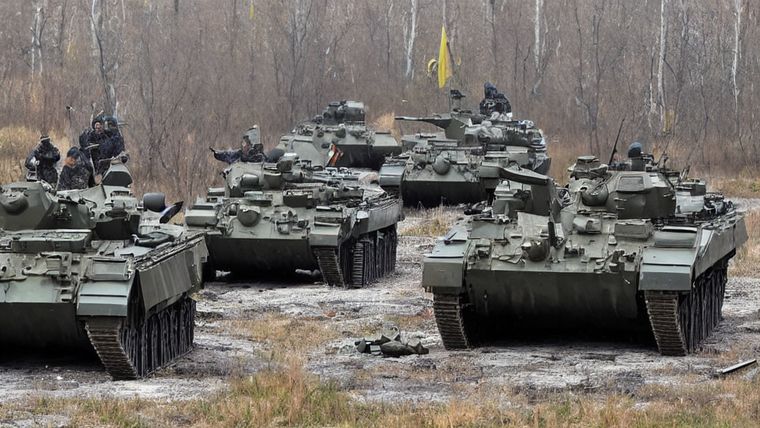Ukraine's Bold Offensive into Russian Territory: Objectives and Implications

The ongoing offensive by the Ukrainian army in Russia’s Kursk region has surprised military analysts and ignited debate about Ukraine’s objectives. Since Tuesday morning, hundreds of Ukrainian soldiers, along with armored vehicles, have crossed the border, launching an unexpected assault that has reportedly resulted in the occupation of around 350 square kilometers of Russian territory. This advance has come despite initial expectations that Ukraine could not penetrate so deeply into Russian ground.
Reports indicate that fierce fighting has ensued, with both military and civilian casualties remaining unclear. The Russian government has declared a state of emergency in Kursk, with officials admitting that the situation is dire. However, conflicting reports from military sources suggest that reinforcements may finally be arriving to bolster Russian defenses.
President Volodymyr Zelensky of Ukraine has acknowledged the operation indirectly, asserting, "Russia has brought the war into our country and it should feel what it's like." Yet the ultimate goals behind this significant military maneuver remain ambiguous.
The incursion began when several hundred Ukrainian soldiers overwhelmed the Russian border defenses near Sumy, capitalizing on what appeared to be unpreparedness on the Russian side. Ukrainian forces advanced primarily toward Sverdilkovo and Sudzha, the latter being a strategic location near a nuclear power plant and an important gas pipeline hub. The Institute for the Study of War has provided updated maps reflecting these Ukrainian movements.
Despite Russian Ministry of Defense attempts to reassure that Ukrainian forces had been repelled, evidence suggests otherwise. Analysts and journalists are relying heavily on social media content, particularly from Russian military bloggers, for insights into on-ground developments, as both Ukraine and Russia have been reticent to share detailed information. These milbloggers often offer unfiltered accounts that can either corroborate or contradict official statements.
Sources indicate that while Russian authorities reported on civilian casualties and extensive evacuations, Ukrainian forces have reportedly captured a number of Russian prisoners of war. Videos showing Ukrainian soldiers with captured soldiers have emerged, bolstering claims that Ukraine has made tangible gains.
As the dynamics on the battlefield evolve, it appears that Russian reinforcements are starting to arrive, but the effectiveness of any organized defense remains uncertain. Initially, Ukraine's surprise attack has allowed them to capitalize on weak opposition, but the prognosis becomes concerning if they encounter stronger, well-prepared Russian forces.
Discussion around the objectives of the Ukrainian operation has sparked much debate. Some analysts propose that this offensive might serve as a diversion, drawing Russian forces away from the prolonged fighting in the Donbass region. Others suggest the intent could be to achieve strategic military objectives, particularly with respect to supply routes that are critical for Russian logistics.
Another hypothesis posits that the incursion aims to serve as a tactical acquisition of bargaining tools—specifically, prisoners of war—that could be vital in any future negotiations with Russia. As talks of negotiations arise in the Ukrainian media and political discussions, the importance of demonstrating Russian vulnerability cannot be overlooked, especially as Ukraine faces numerous challenges, including dwindling resources and troop numbers.
In essence, while the complexities of the military situation are unfolding, the Ukrainian army’s decision to launch an offensive into Russia marks a significant shift in the conflict narrative. As the situation develops, the hope remains that clarity will emerge regarding the true intent behind these military actions, and the broader implications for both Ukraine and Russia in this drawn-out conflict.
Related Sources:
